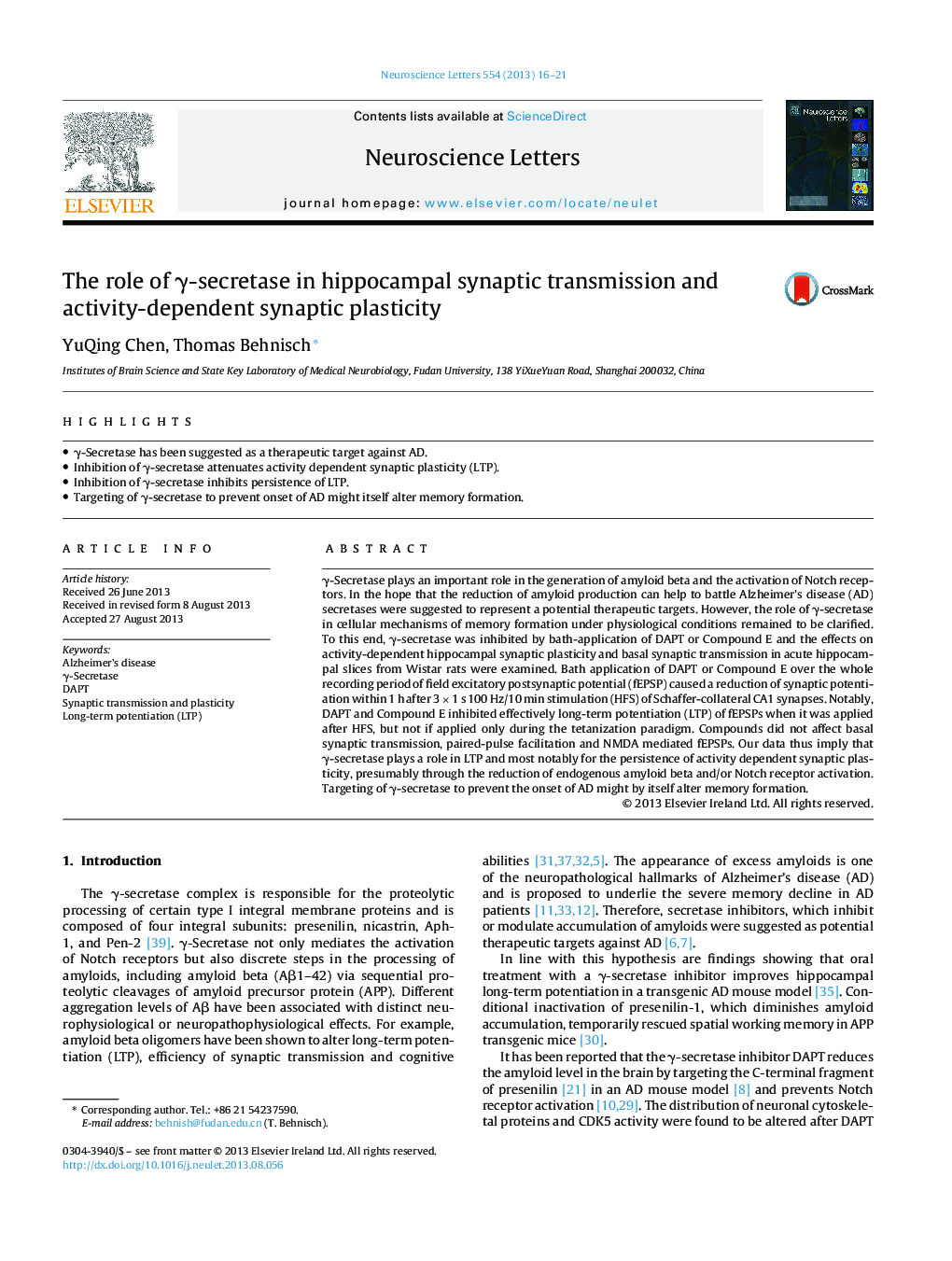| Article ID | Journal | Published Year | Pages | File Type |
|---|---|---|---|---|
| 4343948 | Neuroscience Letters | 2013 | 6 Pages |
•γ-Secretase has been suggested as a therapeutic target against AD.•Inhibition of γ-secretase attenuates activity dependent synaptic plasticity (LTP).•Inhibition of γ-secretase inhibits persistence of LTP.•Targeting of γ-secretase to prevent onset of AD might itself alter memory formation.
γ-Secretase plays an important role in the generation of amyloid beta and the activation of Notch receptors. In the hope that the reduction of amyloid production can help to battle Alzheimer's disease (AD) secretases were suggested to represent a potential therapeutic targets. However, the role of γ-secretase in cellular mechanisms of memory formation under physiological conditions remained to be clarified. To this end, γ-secretase was inhibited by bath-application of DAPT or Compound E and the effects on activity-dependent hippocampal synaptic plasticity and basal synaptic transmission in acute hippocampal slices from Wistar rats were examined. Bath application of DAPT or Compound E over the whole recording period of field excitatory postsynaptic potential (fEPSP) caused a reduction of synaptic potentiation within 1 h after 3 × 1 s 100 Hz/10 min stimulation (HFS) of Schaffer-collateral CA1 synapses. Notably, DAPT and Compound E inhibited effectively long-term potentiation (LTP) of fEPSPs when it was applied after HFS, but not if applied only during the tetanization paradigm. Compounds did not affect basal synaptic transmission, paired-pulse facilitation and NMDA mediated fEPSPs. Our data thus imply that γ-secretase plays a role in LTP and most notably for the persistence of activity dependent synaptic plasticity, presumably through the reduction of endogenous amyloid beta and/or Notch receptor activation. Targeting of γ-secretase to prevent the onset of AD might by itself alter memory formation.
